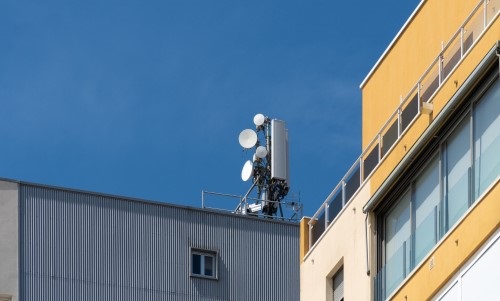
11.24.22 – SSI – Shane Clary
As one is starting to work within the BDA market, it is recommended that the installing firm find and use a firm that specializes in system design.
This is the third and final column on bi-directional amplifiers (BDA) or emergency responder communications enhancement system (ERCES). This month we will look at some additional details in the design and installation of these systems as well as their inspections and testing.
As part of the design, you will need to know what radio bands are used by the responding authorizations. While most systems are now on the 700/800MHz band, there are still a number that use VHF or UHF. One may find themselves designing a system in which all of these bands are used. A second item that the designer needs to verify is if the installed system is to be Class A or Class B.
As covered prior, part of the survey is to determine if a DBBA system is even required to be installed within a structure. Depending on the size, construction and location of a building to the system transmitter, a BDA system may not be required. If this is the case, the individual who conducted the survey would issue a report in which it is stated that after a survey, conducted in accordance with NFPA 1225, Standard for Emergency Services Communications, that no system is required, the work is completed. The report must be completed by a person that hold an FCC GROL (General Radiotelephone Operators License).
As one is starting to work within the BDA market, it is recommended that the installing firm find and use a firm that specializes in system design. This is taking the information that is obtained by the site survey and determining where the distributed antenna system (DAS) is to be installed within the building. It is not the routing of the coax or fiber cables that is the issue, but the locations as to where each of the DAS antennas are to be installed.
Firms that specialize in this field can produce a set of drawings that will meet the requirements of the AHJ and save the installing firm the cost of this software as they are starting. The design software that is required is in the $15,000-$30,000 price range per license copy.
The installation of the system is fairly routine, with the installer following the requirements of the BDA manufacturer and of NFPA 1225. Care must be taken in the interconnection of coax or fiber cables that may be used by a system. Improper connection could lead to a faulty system. The system installer does need to be familiar with Chapter 18, In-Building Emergency Responder Communications Enhancement Systems within 1225. In addition, all should go through the manufacturer’s product certification program.
While these systems are not part of a building’s fire alarm system, they are to be connected to a fire alarm system for the supervision of critical system functions. These include the following:
- Signal source malfunction
- Active RF emitting device failure
- Low battery
- Active system component failure
- Loss of AC power
- Battery charger failure
If the AHJ approves, all of these functions may be supervised by the fire alarm system by a single supervisory zone or address.
Once the system has been installed, testing of the system shall be in accordance with Chapter 20, Testing within 1225. The person who is conducting the test and inspections needs to be qualified and hold an FCC GROL license. Depending upon the AHJ, the testing may require a spectrum analyzer to verify isolation and the “noise floor,” or a portable radio that is on the channel or channels that are used.
Remember, that these systems may be used by more than just the fire department. A number of AHJs may provide a loaner radio to be used for pre-testing and the acceptance test. Audio quality needs to be a part of any final test.
NFPA 1221 as well as the FCC require that these systems be inspected and tested on an annual cycle. Conditions do change. There may be a change to the interior of a building in which part of the occupancy which did have prior coverage no longer has coverage. There also may have been a change to the area surrounding the occupancy, where a new construction may be blocking or changing the signal strength of the downlink and/or uplink signal.
The structure may also have had a change in the type of windows that are being used, to ones that are more energy efficient. These tend to block RF waves. The individual who is conducting these required inspections and tests must also hold an FCC GROL.
Where in the past, these systems were found primarily in high-rise structures or buildings of large square footage, the size of a structure that will require at a minimum a site survey and a possible BDA system is down to 5,000 square feet. With UL moving toward the certification of these systems and NICET now having a certification program for the design, installation and testing of them, these systems are here to stay and will be increasing in number as new building and fire codes are adopted.
If you are not yet offering these systems as part of your services, now is the time to begin an active investigation into deciding to add these to your product offerings.
